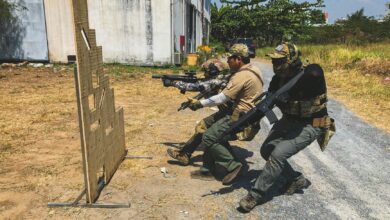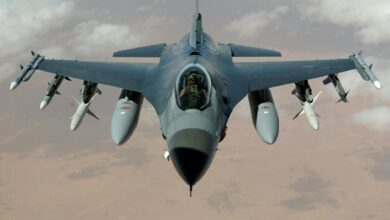top 10 powerful army in the world
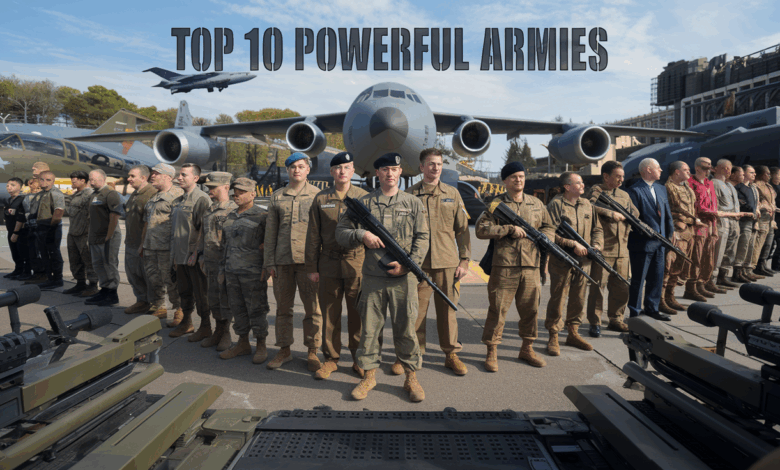
In a world of geopolitical tensions and ever-evolving security challenges, the question on everyone’s mind is: Who holds the reins of military might? 🌍💪 From advanced technology to sheer manpower, the landscape of global military power is a complex tapestry woven with strategy, innovation, and raw strength.
Imagine a chessboard where nations are the players, and their armed forces are the pieces. Which countries have positioned themselves as the most formidable opponents? Whether you’re a history buff, a current affairs enthusiast, or simply curious about the balance of power in our world, understanding the top military forces is crucial. These aren’t just numbers and equipment—they’re the guardians of national security and shapers of international policy.
In this eye-opening exploration, we’ll dive into the top 10 most powerful armies in the world. We’ll uncover the criteria that set these forces apart, from the technological prowess of the United States to the vast human resources of China. Get ready to journey through a global panorama of military might, as we examine the strengths that make these armed forces the titans of our time. 🚀🛡️
Criteria for Ranking Military Powers

A. Manpower and personnel strength
When evaluating the world’s most powerful armies, one of the primary factors to consider is manpower and personnel strength. This crucial element encompasses not only the sheer number of active-duty soldiers but also the quality of their training, education, and overall readiness for combat.
Active-duty personnel
The number of active-duty personnel is often the first metric used to gauge a military’s strength. Countries with larger populations typically have an advantage in this area, as they can maintain a more substantial standing army. However, it’s important to note that quantity doesn’t always equate to quality.
Here’s a comparison of active-duty personnel for some of the world’s leading military powers:
| Country | Active-duty personnel |
|---|---|
| China | 2,035,000 |
| India | 1,455,550 |
| USA | 1,388,100 |
| Russia | 900,000 |
| North Korea | 1,280,000 |
While these numbers are impressive, they don’t tell the whole story. The effectiveness of these forces depends on various factors, including training, equipment, and leadership.
Reserve forces
In addition to active-duty personnel, many countries maintain significant reserve forces. These individuals can be called upon in times of conflict or national emergency, effectively expanding the military’s capabilities. Reserve forces often receive regular training to maintain their skills and readiness.
Training and education
The quality of training and education provided to military personnel is a critical factor in determining overall effectiveness. Advanced militaries invest heavily in comprehensive training programs that cover:
- Basic combat skills
- Specialized warfare techniques
- Leadership development
- Technical and technological proficiency
- Strategic and tactical thinking
Countries with well-established military academies and ongoing professional development programs tend to produce more capable and adaptable forces.
Specialized units
Another aspect of personnel strength is the presence of specialized units within the military. These may include:
- Special forces (e.g., Navy SEALs, SAS, Spetsnaz)
- Cyber warfare units
- Rapid response teams
- Peacekeeping forces
The existence and effectiveness of these specialized units can significantly enhance a military’s overall capabilities and versatility.
Retention and experience
The ability to retain experienced personnel is crucial for maintaining a strong military. Veteran soldiers and officers bring invaluable knowledge and skills to their roles, enhancing the overall effectiveness of the force. Factors that influence retention include:
- Career progression opportunities
- Benefits and compensation
- Quality of life for service members and their families
- Sense of purpose and mission
Countries that successfully address these factors tend to have more experienced and capable military personnel.
B. Technological advancements
In the modern era, technological superiority often translates directly into military power. Advanced weaponry, communication systems, and intelligence gathering capabilities can provide a significant edge on the battlefield and in strategic planning.
Weapons systems
The development and deployment of cutting-edge weapons systems is a key indicator of a military’s technological prowess. This includes:
- Precision-guided munitions
- Stealth technology
- Unmanned aerial vehicles (UAVs) and drones
- Advanced missile defense systems
- Hypersonic weapons
Countries at the forefront of weapons technology, such as the United States, Russia, and China, often have a significant advantage in military capabilities.
Network-centric warfare
Modern militaries are increasingly focused on network-centric warfare, which involves the integration of various systems and units through advanced communication and information technologies. This approach enhances:
- Situational awareness
- Command and control capabilities
- Coordination between different branches of the military
- Real-time intelligence sharing
Militaries that excel in network-centric warfare can respond more quickly and effectively to evolving threats and opportunities on the battlefield.
Artificial Intelligence and autonomous systems
The integration of artificial intelligence (AI) and autonomous systems into military operations is a rapidly growing trend. These technologies have the potential to revolutionize warfare in several ways:
- Enhanced decision-making through data analysis
- Autonomous vehicles and weapons platforms
- Predictive maintenance for equipment
- Improved logistics and supply chain management
- Advanced cybersecurity measures
Countries investing heavily in military AI applications, such as the United States, China, and Israel, are positioning themselves at the forefront of future warfare capabilities.
Space-based capabilities
As technology advances, space is becoming an increasingly important domain for military operations. Key space-based capabilities include:
- Satellite communications
- Global Positioning System (GPS) technology
- Space-based early warning systems
- Reconnaissance and surveillance satellites
- Anti-satellite weapons
Nations with robust space programs and military space capabilities, such as the United States, Russia, and China, have a significant advantage in this domain.
Cyber warfare capabilities
In the digital age, cyber warfare has become a critical component of military power. Advanced cyber capabilities can:
- Disrupt enemy communications and infrastructure
- Gather intelligence through network infiltration
- Protect national assets from cyber attacks
- Conduct information warfare and influence operations
Countries with strong cyber warfare capabilities, including the United States, Russia, China, and Israel, are often considered more formidable in the overall military power rankings.
C. Budget allocation
The financial resources a country dedicates to its military play a crucial role in determining its overall strength and capabilities. Budget allocation affects every aspect of military operations, from personnel to equipment and research and development.
Defense spending as a percentage of GDP
One way to measure a country’s commitment to its military is by looking at defense spending as a percentage of Gross Domestic Product (GDP). This metric provides insight into how much of a nation’s economic resources are devoted to military purposes.
Here’s a comparison of defense spending as a percentage of GDP for some major military powers:
| Country | Defense spending (% of GDP) |
|---|---|
| USA | 3.7% |
| Russia | 4.3% |
| China | 1.7% |
| India | 2.9% |
| UK | 2.2% |
It’s important to note that a higher percentage doesn’t always translate to a larger overall budget, as countries have vastly different GDPs.
Total defense budget
The absolute value of a country’s defense budget is another crucial factor in assessing military power. Countries with larger economies can typically afford to spend more on their armed forces, even if the percentage of GDP is lower.
For example, the United States consistently maintains the world’s largest defense budget, allowing for significant investments in technology, personnel, and global operations. China, while spending a smaller percentage of its GDP on defense, has the second-largest military budget due to the size of its economy.
Efficiency in budget allocation
Raw spending numbers don’t tell the whole story, however. The efficiency with which a country allocates its defense budget is equally important. Factors that influence budget efficiency include:
- Procurement practices
- Research and development focus
- Personnel costs and benefits
- Maintenance and logistics expenses
- Operational costs
Countries that can maximize the impact of their defense spending through efficient allocation and management of resources often achieve greater military capabilities relative to their budget size.
Long-term investment and planning
Consistent, long-term investment in military capabilities is crucial for maintaining a powerful armed force. This includes:
- Sustained funding for research and development
- Regular modernization of equipment and systems
- Ongoing training and education programs
- Infrastructure development and maintenance
Nations that maintain a steady, forward-looking approach to defense spending tend to have more robust and adaptable military forces.
International military aid and cooperation
Budget considerations also extend to international military aid and cooperation. Countries that provide significant military assistance to allies or participate in joint development programs can extend their influence and capabilities beyond their borders.
For example, the United States maintains extensive military aid programs and participates in numerous joint development initiatives, such as the F-35 fighter jet program. These activities not only strengthen alliances but also contribute to the overall military power of the country.
D. Strategic capabilities
Strategic capabilities encompass a wide range of factors that contribute to a nation’s ability to project power, defend its interests, and achieve its military objectives on a global scale.
Nuclear deterrence
Nuclear weapons remain a significant factor in assessing a country’s strategic capabilities. The possession of a nuclear arsenal serves as a powerful deterrent and influences global geopolitics. Key aspects of nuclear deterrence include:
- Size and sophistication of the nuclear arsenal
- Delivery systems (ICBMs, SLBMs, strategic bombers)
- Second-strike capabilities
- Nuclear doctrine and policy
Countries with established nuclear capabilities, such as the United States, Russia, China, France, and the United Kingdom, maintain a significant strategic advantage in global power dynamics.
Power projection
The ability to project military power beyond a country’s borders is a crucial strategic capability. This includes:
- Expeditionary forces
- Aircraft carriers and naval task forces
- Long-range bomber aircraft
- Overseas military bases and access agreements
- Aerial refueling capabilities
Nations with strong power projection capabilities, like the United States, can respond to threats and protect their interests on a global scale.
Strategic airlift and sealift capabilities
The capacity to transport large numbers of troops, equipment, and supplies over long distances is essential for global military operations. Strategic airlift and sealift capabilities include:
- Large transport aircraft fleets
- Amphibious assault ships
- Roll-on/roll-off cargo ships
- Logistics support vessels
Countries with robust airlift and sealift capabilities can respond more quickly and effectively to international crises and maintain sustained operations far from their home territories.
Intelligence, surveillance, and reconnaissance (ISR)
Advanced ISR capabilities are critical for informed decision-making and strategic planning. Key components of ISR include:
- Satellite reconnaissance systems
- Signals intelligence (SIGINT) capabilities
- Human intelligence (HUMINT) networks
- Unmanned aerial vehicles (UAVs) for reconnaissance
- Cyber intelligence gathering
Nations with sophisticated ISR capabilities, such as the United States, Israel, and Russia, have a significant advantage in both peacetime and conflict situations.
Strategic partnerships and alliances
The strength of a country’s strategic partnerships and alliances can greatly enhance its overall military capabilities. These relationships provide:
- Shared intelligence and resources
- Expanded global reach through access to foreign bases
- Collective defense agreements (e.g., NATO)
- Joint military exercises and training opportunities
Countries with extensive alliance networks, like the United States and its NATO partners, can leverage these relationships to amplify their strategic capabilities.
Adaptability and rapid response
In an ever-changing global security environment, the ability to adapt quickly to new threats and respond rapidly to emerging crises is a crucial strategic capability. This involves:
- Flexible force structures
- Rapid deployment capabilities
- Advanced command and control systems
- Scenario planning and wargaming
- Continuous training and readiness exercises
Militaries that excel in adaptability and rapid response, such as those of the United States and Israel, are better positioned to address a wide range of potential threats and challenges.
In conclusion, the criteria for ranking military powers are multifaceted and interconnected. Manpower and personnel strength provide the foundation, while technological advancements enhance capabilities and effectiveness. Budget allocation determines the resources available for military development, and strategic capabilities define a nation’s ability to project power and achieve its objectives on a global scale. By considering these factors holistically, we can better understand the complex dynamics that shape the world’s most powerful armies.
United States Armed Forces
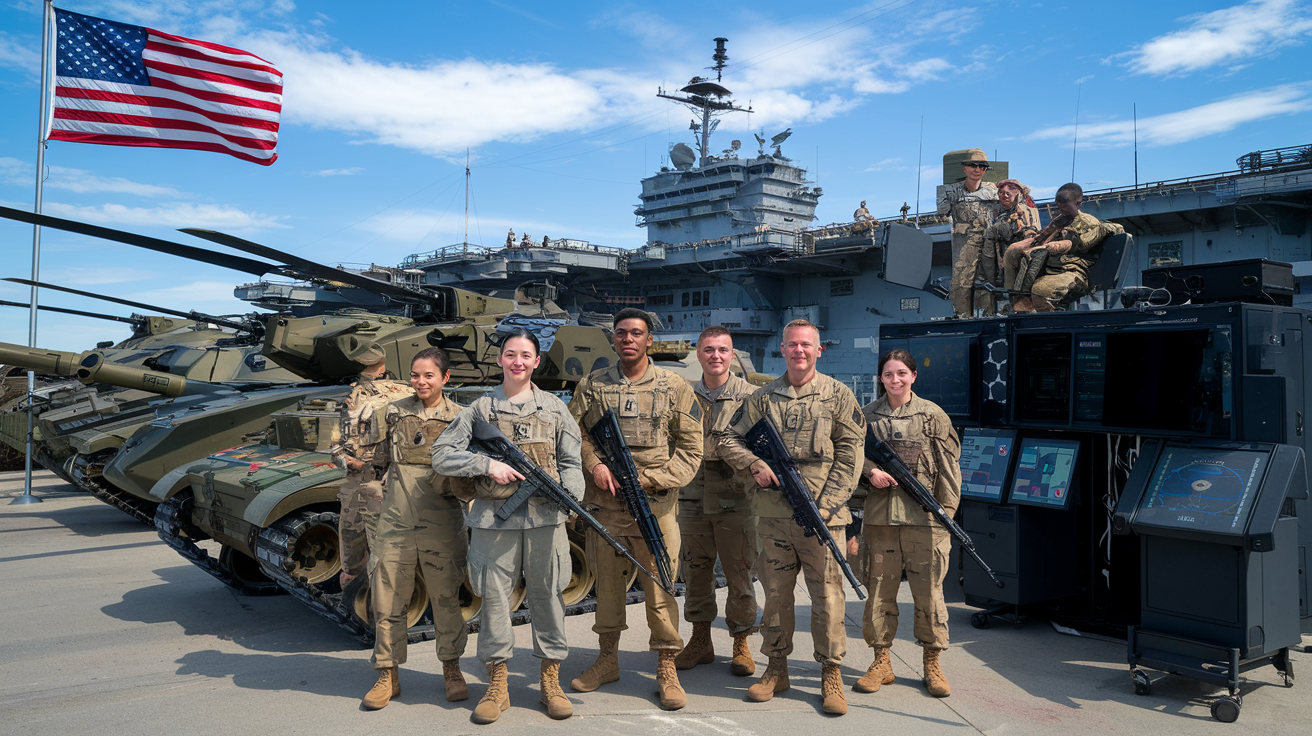
Global presence and power projection
The United States Armed Forces stand at the forefront of global military power, with an unparalleled ability to project force across the world. This capability is a result of extensive strategic planning, substantial investment, and a network of international alliances and partnerships.
Strategic Bases and Forward Deployment
The U.S. military maintains a vast network of bases and installations worldwide, allowing for rapid response and sustained operations in virtually any region. These bases serve as launching pads for military operations, logistical hubs, and deterrents against potential adversaries.
- Europe: Bases in Germany, Italy, and the United Kingdom
- Asia-Pacific: Installations in Japan, South Korea, and Guam
- Middle East: Presence in Bahrain, Qatar, and the United Arab Emirates
- Africa: Djibouti hosts a significant U.S. military presence
This global footprint enables the U.S. to respond swiftly to emerging threats, conduct humanitarian operations, and support allies in times of need.
Rapid Deployment Forces
The U.S. military’s ability to quickly mobilize and deploy forces anywhere in the world is a cornerstone of its power projection capability. Units such as the Army’s 82nd Airborne Division and the Marine Corps’ Marine Expeditionary Units (MEUs) are specifically designed for rapid deployment and can be on the ground in a matter of hours.
Air Mobility and Refueling Capabilities
The U.S. Air Force’s fleet of transport aircraft and aerial refueling tankers plays a crucial role in power projection. The C-17 Globemaster III and C-5 Galaxy can transport heavy equipment and troops across vast distances, while KC-135 Stratotankers and KC-10 Extenders extend the range of fighter jets and bombers.
Naval Power Projection
The U.S. Navy’s fleet of aircraft carriers, amphibious assault ships, and support vessels allows for sustained operations far from American shores. Carrier Strike Groups, consisting of an aircraft carrier and its escort ships, can project air power and conduct a wide range of missions in distant theaters.
Special Operations Forces
U.S. Special Operations Command (SOCOM) units, including Navy SEALs, Army Green Berets, and Air Force Combat Controllers, can operate in remote and hostile environments with minimal support. These elite forces are often the tip of the spear in U.S. military operations worldwide.
Logistics and Supply Chain
The ability to sustain operations globally requires a robust logistics network. The U.S. military has developed an unparalleled system for moving personnel, equipment, and supplies across vast distances, ensuring that forces can operate effectively for extended periods.
| Component | Key Capabilities | Global Reach |
|---|---|---|
| Army | Rapid deployment, heavy armor | Europe, Middle East, Asia |
| Navy | Carrier strike groups, amphibious operations | All major oceans and seas |
| Air Force | Strategic bombing, air superiority | Global air power projection |
| Marine Corps | Expeditionary forces, amphibious assault | Rapid response worldwide |
| Space Force | Satellite communications, space-based assets | Global coverage |
Advanced weapon systems
The United States Armed Forces boast some of the most sophisticated and technologically advanced weapon systems in the world. This technological edge is a key factor in maintaining America’s military superiority and its ability to deter potential adversaries.
Stealth Technology
Stealth technology has revolutionized modern warfare, and the U.S. is at the forefront of its development and deployment.
- F-22 Raptor: Air superiority fighter with unmatched stealth capabilities
- F-35 Lightning II: Multi-role fighter with advanced sensors and networking
- B-2 Spirit: Long-range stealth bomber capable of penetrating heavily defended airspace
- B-21 Raider: Next-generation stealth bomber currently in development
These aircraft can operate in contested environments, evading enemy radar and air defenses to strike high-value targets or gather critical intelligence.
Precision-Guided Munitions
The U.S. military’s arsenal includes a wide array of precision-guided munitions that minimize collateral damage and maximize operational effectiveness.
- Joint Direct Attack Munition (JDAM): GPS-guided bombs
- Tomahawk cruise missiles: Long-range, all-weather precision strike capability
- Small Diameter Bomb (SDB): Compact, precision-guided glide bomb
Missile Defense Systems
To protect against ballistic missile threats, the U.S. has developed and deployed several advanced missile defense systems:
- Terminal High Altitude Area Defense (THAAD)
- Patriot Advanced Capability-3 (PAC-3)
- Aegis Ballistic Missile Defense System
These systems provide layered defense against a variety of missile threats, from short-range tactical missiles to intercontinental ballistic missiles (ICBMs).
Directed Energy Weapons
The U.S. military is investing heavily in directed energy weapons, which offer the potential for speed-of-light engagement and nearly unlimited magazines.
- High Energy Laser systems for air defense and counter-drone operations
- High-Powered Microwave weapons for electronic warfare and area denial
Network-Centric Warfare
Advanced command, control, communications, computers, intelligence, surveillance, and reconnaissance (C4ISR) systems form the backbone of U.S. military operations.
- Joint All-Domain Command and Control (JADC2) initiative
- Link 16 tactical data link for real-time information sharing
- Global Information Grid (GIG) for seamless information flow
Unmanned Systems
The U.S. military has pioneered the use of unmanned systems across all domains:
- Air: MQ-9 Reaper, RQ-4 Global Hawk
- Ground: Remotely Operated Ground Unit for Expeditionary (ROGUE) Fires vehicle
- Sea: Sea Hunter autonomous surface vessel, Orca extra-large unmanned undersea vehicle
Cyber and Electronic Warfare Capabilities
Recognizing the importance of the digital battlefield, the U.S. has developed advanced cyber and electronic warfare capabilities:
- U.S. Cyber Command for offensive and defensive cyber operations
- Next Generation Jammer for advanced electronic attack capabilities
Advanced Infantry Equipment
Individual soldiers benefit from cutting-edge technology:
- Enhanced Night Vision Goggles-Binocular (ENVG-B)
- Integrated Visual Augmentation System (IVAS)
- Advanced body armor and lightweight combat helmets
| Weapon System | Domain | Key Features |
|---|---|---|
| F-35 Lightning II | Air | Stealth, sensor fusion, multi-role capabilities |
| Virginia-class submarine | Sea | Advanced sonar, Tomahawk missiles, special operations support |
| M1A2 Abrams SEP v3 | Land | Advanced armor, networked systems, improved firepower |
| Aegis Combat System | Air/Sea | Integrated air and missile defense, long-range detection |
| Tactical High Energy Laser | Air/Land | Directed energy weapon, rapid engagement, low cost per shot |
Robust naval and air forces
The United States Armed Forces maintain the most powerful naval and air forces in the world, providing unmatched capabilities in maritime and aerial domains. These forces are crucial for maintaining global security, projecting power, and safeguarding America’s interests worldwide.
U.S. Navy
The U.S. Navy is the largest and most capable naval force globally, with a fleet that includes:
Aircraft Carriers
The cornerstone of U.S. naval power projection is its fleet of nuclear-powered aircraft carriers.
- 11 Nimitz-class and Ford-class supercarriers
- Each carrier can deploy over 75 aircraft
- Capable of sustained operations for months without refueling
Surface Combatants
A diverse fleet of surface ships provides multi-mission capabilities:
- Arleigh Burke-class destroyers: Multi-role warships equipped with the Aegis combat system
- Ticonderoga-class cruisers: Air defense and surface warfare specialists
- Littoral Combat Ships: Designed for operations in coastal waters
Submarines
The U.S. submarine force is a critical component of naval strategy:
- Ohio-class ballistic missile submarines (SSBNs): Strategic deterrent
- Virginia-class attack submarines (SSNs): Multi-mission capabilities including intelligence gathering and special operations support
- Seawolf-class submarines: Advanced and ultra-quiet attack submarines
Amphibious Warfare Ships
These vessels support Marine Corps operations and humanitarian missions:
- Wasp-class and America-class amphibious assault ships
- San Antonio-class amphibious transport docks
- Whidbey Island-class dock landing ships
Naval Aviation
The Navy’s air arm is a powerful force in its own right:
- F/A-18E/F Super Hornet: Multi-role fighter
- EA-18G Growler: Electronic warfare aircraft
- E-2D Advanced Hawkeye: Airborne early warning and control
- P-8 Poseidon: Maritime patrol and anti-submarine warfare
U.S. Air Force
The U.S. Air Force is the world’s most technologically advanced air force, with capabilities spanning strategic bombing, air superiority, and global reach.
Strategic Bombers
Long-range bombers form the backbone of U.S. global strike capabilities:
- B-52 Stratofortress: Versatile, long-range heavy bomber
- B-1B Lancer: Supersonic bomber with a large payload capacity
- B-2 Spirit: Stealth bomber capable of penetrating heavily defended airspace
Fighter Aircraft
A mix of air superiority and multi-role fighters ensures dominance in the skies:
- F-22 Raptor: Air superiority fighter with unmatched stealth and maneuverability
- F-35A Lightning II: Multi-role stealth fighter
- F-15E Strike Eagle: Long-range, multi-role strike fighter
- F-16 Fighting Falcon: Versatile multi-role fighter
Airlifters and Tankers
The Air Force’s mobility fleet enables global reach and sustained operations:
- C-17 Globemaster III: Strategic airlifter
- C-5M Super Galaxy: Heavy strategic airlifter
- KC-135 Stratotanker and KC-46 Pegasus: Aerial refueling tankers
Intelligence, Surveillance, and Reconnaissance (ISR) Aircraft
Specialized aircraft provide critical intelligence and situational awareness:
- U-2 Dragon Lady: High-altitude reconnaissance
- RC-135 Rivet Joint: Signals intelligence
- E-3 Sentry (AWACS): Airborne early warning and control
Special Operations Aircraft
The Air Force Special Operations Command operates a fleet of specialized aircraft:
- AC-130J Ghostrider: Gunship for close air support
- CV-22 Osprey: Tiltrotor aircraft for long-range infiltration and exfiltration
Joint Operations and Interoperability
Russian Armed Forces

Extensive nuclear arsenal
Russia’s nuclear arsenal stands as one of the most formidable in the world, rivaling that of the United States. This extensive stockpile serves as a cornerstone of Russia’s military power and global influence. The country’s nuclear capabilities are a critical factor in its ranking among the world’s most powerful armies.
Strategic Nuclear Forces
Russia’s strategic nuclear forces consist of a triad of delivery systems:
- Land-based intercontinental ballistic missiles (ICBMs)
- Submarine-launched ballistic missiles (SLBMs)
- Strategic bombers
This diverse array of nuclear delivery methods ensures a robust second-strike capability, a crucial element of nuclear deterrence.
| Delivery System | Examples | Estimated Range |
|---|---|---|
| ICBMs | RS-28 Sarmat, RS-24 Yars | 10,000-18,000 km |
| SLBMs | RSM-56 Bulava | 8,000-10,000 km |
| Strategic Bombers | Tu-95MS, Tu-160 | 10,000-15,000 km |
The sheer number of nuclear warheads in Russia’s arsenal, estimated to be around 6,000, underscores its position as a nuclear superpower. This vast stockpile includes both strategic and tactical nuclear weapons, providing Russia with a range of options for nuclear deterrence and potential battlefield use.
Tactical Nuclear Weapons
In addition to its strategic nuclear forces, Russia maintains a significant arsenal of tactical nuclear weapons. These shorter-range, lower-yield weapons are designed for potential use in conventional conflicts. The presence of tactical nuclear weapons in Russia’s arsenal adds another layer of complexity to its military capabilities and strategic calculus.
Modernization efforts
Russia’s armed forces have undergone significant modernization in recent years, aiming to enhance their capabilities and maintain their status as one of the world’s most powerful militaries. This modernization program has focused on several key areas:
- Advanced weaponry
- Command and control systems
- Personnel training and professionalization
- Force restructuring
Advanced Weaponry Development
Russia has invested heavily in developing and deploying advanced weapon systems across various domains:
- Hypersonic missiles: The Avangard and Kinzhal hypersonic missile systems represent a leap forward in missile technology, potentially challenging existing missile defense systems.
- Air defense systems: The S-400 and S-500 surface-to-air missile systems are among the most advanced in the world, providing multilayered air defense capabilities.
- Naval modernization: The introduction of new submarine classes and surface vessels, including the Yasen-class submarines and Admiral Gorshkov-class frigates, has bolstered Russia’s naval capabilities.
- Electronic warfare: Russia has made significant strides in electronic warfare capabilities, developing systems to disrupt enemy communications and navigation.
Command and Control Modernization
Enhancing command and control systems has been a priority in Russia’s modernization efforts. This includes:
- Implementing advanced communication networks for improved coordination between different branches of the armed forces
- Developing automated command and control systems to enhance decision-making processes
- Integrating artificial intelligence and machine learning technologies into military operations
Personnel Training and Professionalization
Russia has focused on improving the quality of its military personnel through:
- Enhanced training programs
- Increased emphasis on professional development
- Recruitment of contract soldiers to supplement conscription
- Specialization of units for specific roles and missions
These efforts aim to create a more skilled and adaptable force capable of operating advanced weapon systems and executing complex military operations.
Force Restructuring
The Russian armed forces have undergone significant structural changes as part of the modernization process:
- Streamlining the command structure for more efficient decision-making
- Creating rapid reaction forces for swift deployment in crisis situations
- Establishing new military districts to improve regional command and control
- Developing a more flexible and mobile force structure
Combat experience in recent conflicts
Russia’s armed forces have gained significant combat experience in recent years, particularly through their involvement in conflicts such as Syria and Ukraine. This real-world experience has provided valuable insights into modern warfare and has influenced Russian military doctrine and tactics.
Syrian Conflict
Russia’s intervention in the Syrian Civil War, beginning in 2015, has provided its armed forces with extensive combat experience in a complex, multi-faceted conflict. Key aspects of this experience include:
- Air campaign operations: Russian aerospace forces conducted thousands of sorties, honing their precision strike capabilities and testing new weapon systems.
- Special operations: Russian special forces gained experience in counter-insurgency operations and advising local forces.
- Naval operations: The Russian Navy demonstrated its ability to project power and support land-based operations from the Mediterranean.
- Coordination with allies: Russia gained experience in coordinating military operations with various state and non-state actors.
This combat experience has allowed Russia to test and refine its military tactics, techniques, and procedures in a real-world environment.
Ukraine Conflict
The ongoing conflict in Ukraine, particularly since 2014, has provided Russia with additional combat experience, albeit in a different context:
- Hybrid warfare: The conflict has showcased Russia’s capabilities in combining conventional military operations with unconventional tactics, including information warfare and cyber operations.
- Urban warfare: Russian-backed forces have gained experience in urban combat scenarios, particularly in the Donbas region.
- Electronic warfare: The conflict has provided an opportunity to test and refine electronic warfare capabilities in a modern battlefield environment.
Lessons Learned and Adaptations
The combat experience gained in these conflicts has led to several adaptations in Russian military thinking and practice:
- Emphasis on precision strikes: The effectiveness of precision-guided munitions in Syria has reinforced the importance of these weapons in Russian military doctrine.
- Integration of unmanned systems: Combat experience has accelerated the development and integration of unmanned aerial vehicles (UAVs) for reconnaissance and strike missions.
- Improved logistics and sustainment: Extended operations in Syria have led to improvements in Russia’s ability to sustain forces over long distances.
- Enhanced coordination between branches: Combat operations have highlighted the importance of joint operations, leading to improved coordination between different branches of the armed forces.
These real-world combat experiences have not only tested Russia’s military capabilities but have also provided valuable insights that continue to shape the development and modernization of its armed forces. As a result, Russia’s military remains a formidable force on the global stage, with battle-tested personnel and equipment contributing to its ranking among the world’s most powerful armies.
Chinese People’s Liberation Army
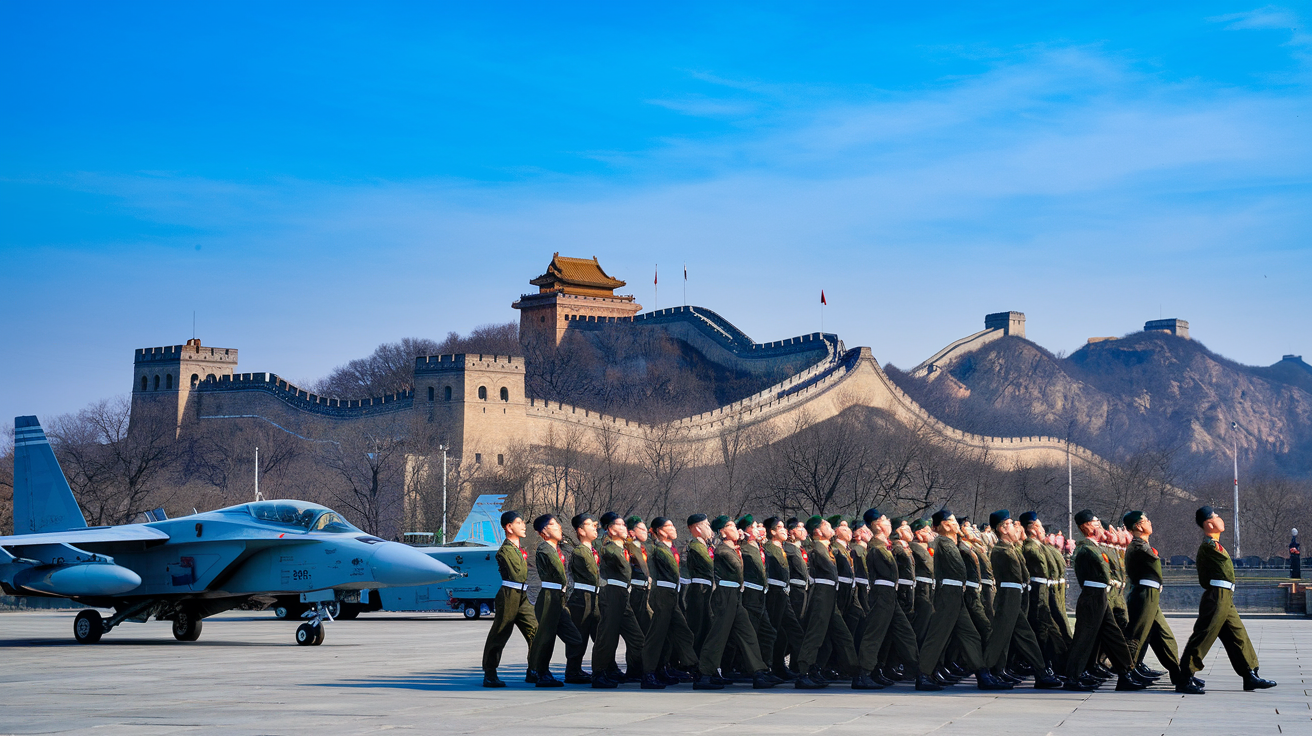
Rapid military modernization
China’s People’s Liberation Army (PLA) has undergone a remarkable transformation in recent decades, positioning itself as one of the world’s most formidable military forces. This rapid modernization has been driven by substantial increases in defense spending, technological advancements, and a strategic shift in military doctrine.
The PLA’s modernization efforts have focused on several key areas:
- Equipment and weaponry upgrades
- Organizational restructuring
- Training and personnel development
- Adoption of advanced technologies
Let’s explore each of these aspects in detail:
Equipment and weaponry upgrades
The PLA has invested heavily in cutting-edge military hardware, significantly enhancing its combat capabilities. Some notable acquisitions and developments include:
- Fifth-generation fighter jets (J-20 and FC-31)
- Advanced main battle tanks (Type 99A)
- Long-range missiles and precision-guided munitions
- Modern submarines and surface vessels
These upgrades have not only improved the PLA’s offensive capabilities but also strengthened its defensive posture.
Organizational restructuring
To streamline operations and improve efficiency, the PLA has undergone significant organizational changes:
- Creation of the Strategic Support Force (SSF) to oversee space, cyber, and electronic warfare operations
- Establishment of the Joint Logistic Support Force (JLSF) to enhance logistical coordination
- Reduction of ground forces in favor of a more balanced force structure
These changes have resulted in a more agile and responsive military organization, better suited to modern warfare scenarios.
Training and personnel development
The PLA has placed increased emphasis on realistic training exercises and professional development for its personnel:
- Joint exercises involving multiple military branches
- Increased focus on complex, multi-domain operations
- Enhanced recruitment and retention of highly skilled personnel
- Improved education and training programs for officers and enlisted personnel
These efforts have significantly improved the PLA’s overall combat readiness and operational effectiveness.
Adoption of advanced technologies
The PLA has embraced cutting-edge technologies to gain a competitive edge in modern warfare:
| Technology | Application |
|---|---|
| Artificial Intelligence | Decision-making support, autonomous systems |
| Quantum computing | Cryptography, secure communications |
| Hypersonic weapons | Rapid strike capabilities |
| Unmanned systems | Reconnaissance, surveillance, and combat support |
By integrating these technologies into its military systems, the PLA aims to overcome traditional advantages held by other major powers.
Growing naval capabilities
As part of its broader modernization efforts, China has placed significant emphasis on enhancing its naval capabilities. This focus on maritime power projection aligns with China’s strategic interests in the Asia-Pacific region and beyond.
The People’s Liberation Army Navy (PLAN) has seen substantial growth and modernization in recent years, with key developments including:
- Aircraft carrier program
- Expansion of submarine fleet
- Advanced surface combatants
- Amphibious assault capabilities
Let’s examine each of these areas in more detail:
Aircraft carrier program
China’s aircraft carrier program has made significant strides:
- Liaoning: China’s first aircraft carrier, a refurbished Soviet-era vessel
- Shandong: The first domestically built carrier, commissioned in 2019
- Type 003: A larger, more advanced carrier currently under construction
These carriers provide China with enhanced power projection capabilities and the ability to conduct operations far from its shores.
Expansion of submarine fleet
The PLAN has invested heavily in both conventional and nuclear-powered submarines:
- Type 095 nuclear-powered attack submarines
- Type 096 nuclear-powered ballistic missile submarines
- Improved Type 039A conventional submarines
This diverse submarine fleet enhances China’s anti-access/area denial (A2/AD) capabilities and strategic deterrence.
Advanced surface combatants
China has developed and deployed a range of modern surface vessels:
- Type 055 destroyers: Among the most advanced in the world
- Type 052D destroyers: Equipped with advanced radar and weapons systems
- Type 054A frigates: Versatile multi-role platforms
These ships provide the PLAN with improved air defense, anti-submarine warfare, and long-range strike capabilities.
Amphibious assault capabilities
To support potential operations in the Taiwan Strait and beyond, China has bolstered its amphibious assault capabilities:
- Type 075 landing helicopter dock (LHD) ships
- Improved Type 071 amphibious transport docks
- Enhanced landing craft and amphibious vehicles
These assets significantly enhance China’s ability to project power across maritime domains and conduct expeditionary operations.
Focus on cyber and space warfare
Recognizing the importance of non-traditional domains in modern warfare, China has placed considerable emphasis on developing its cyber and space warfare capabilities. These efforts aim to provide the PLA with a strategic advantage in future conflicts and to challenge the dominance of other major powers in these critical domains.
Cyber warfare capabilities
China has made significant investments in its cyber warfare capabilities, focusing on both offensive and defensive measures:
-
Offensive capabilities:
- Advanced persistent threat (APT) groups
- Zero-day exploit development
- Social engineering and information operations
-
Defensive capabilities:
- Enhanced network security measures
- Improved cyber incident response
- Development of indigenous encryption technologies
The PLA’s cyber warfare units are believed to be among the most sophisticated in the world, capable of conducting a wide range of operations from espionage to disruptive attacks on critical infrastructure.
Space warfare capabilities
China’s space program has dual civilian and military applications, with the PLA playing a significant role in its development. Key areas of focus include:
-
Satellite technology:
- Communication satellites
- Navigation satellites (BeiDou system)
- Reconnaissance and surveillance satellites
-
Anti-satellite (ASAT) weapons:
- Direct-ascent ASAT missiles
- Co-orbital ASAT systems
- Directed energy weapons
-
Space-based early warning systems
-
Rapid space launch capabilities
These capabilities provide China with improved situational awareness, communication, and the potential to deny adversaries access to space-based assets during conflicts.
Integration of cyber and space capabilities
China’s approach to cyber and space warfare emphasizes the integration of these domains with traditional military operations. This strategy, often referred to as “informationized warfare,” seeks to achieve information dominance across all domains of conflict.
Key aspects of this integrated approach include:
- Joint cyber-space operations centers
- Combined electromagnetic spectrum management
- Integrated command and control systems
By leveraging synergies between cyber and space capabilities, China aims to create a multi-domain advantage in future conflicts.
In conclusion, the Chinese People’s Liberation Army’s rapid modernization, growing naval capabilities, and focus on cyber and space warfare have significantly enhanced its position as one of the world’s most powerful military forces. These developments have important implications for regional and global security dynamics, as China continues to assert its influence on the world stage.
Indian Armed Forces

A. Large active and reserve personnel
India’s armed forces boast one of the largest military personnel pools in the world, contributing significantly to its ranking among the top powerful armies. With a combination of active-duty soldiers and a vast reserve force, India maintains a formidable military presence that enhances its defensive and offensive capabilities.
Active Personnel
The Indian Armed Forces maintain a substantial active-duty force, comprising:
- Indian Army: Approximately 1.4 million personnel
- Indian Air Force: Around 140,000 active personnel
- Indian Navy: Roughly 67,000 active personnel
This combined strength of over 1.6 million active personnel places India among the top three largest active militaries globally, alongside China and the United States.
Reserve Personnel
In addition to its active-duty force, India maintains a significant reserve component:
- Territorial Army: Approximately 160,000 personnel
- Indian Army Reserve: Around 1.1 million personnel
- Indian Air Force Reserve: Roughly 140,000 personnel
- Indian Navy Reserve: About 55,000 personnel
The total reserve force of nearly 1.5 million personnel complements the active-duty component, providing a vast pool of trained individuals ready for mobilization in times of need.
Advantages of a Large Personnel Pool
The substantial size of India’s military personnel offers several strategic advantages:
| Advantage | Description |
|---|---|
| Rapid Mobilization | Large numbers allow for quick deployment in various scenarios |
| Diverse Skill Sets | Wide range of expertise across different military specialties |
| Territorial Coverage | Ability to maintain presence across India’s vast and varied geography |
| Rotation and Rest | Facilitates proper rest and training cycles without compromising readiness |
| Humanitarian Assistance | Capacity to respond to natural disasters and civil emergencies |
B. Indigenous defense production
India’s commitment to self-reliance in defense production has been a crucial factor in strengthening its armed forces and elevating its status among the world’s powerful armies. The country has made significant strides in developing and manufacturing indigenous military equipment, reducing dependence on foreign suppliers and fostering technological innovation.
Key Areas of Indigenous Production
-
Tanks and Armored Vehicles
- Arjun Main Battle Tank
- BMP-2 “Sarath” Infantry Fighting Vehicle
-
Aircraft and Helicopters
- Tejas Light Combat Aircraft
- HAL Dhruv Advanced Light Helicopter
-
Naval Vessels
- INS Vikrant (Indigenous Aircraft Carrier)
- Kolkata-class destroyers
-
Missiles and Rocket Systems
- Agni series of ballistic missiles
- BrahMos supersonic cruise missile
-
Small Arms and Infantry Weapons
- INSAS rifle family
- Excalibur assault rifle
Benefits of Indigenous Defense Production
-
Strategic Independence: Reduced reliance on foreign suppliers enhances India’s ability to make autonomous defense decisions.
-
Economic Growth: The defense industry contributes significantly to India’s economy, creating jobs and fostering technological innovation.
-
Customization: Indigenous production allows for the development of equipment tailored to India’s specific operational requirements.
-
Export Potential: Successful indigenous designs can be exported, boosting India’s global influence and economic gains.
-
Technological Advancement: The pursuit of advanced military technology drives overall scientific and engineering progress in the country.
Challenges and Future Prospects
While India has made significant progress in indigenous defense production, challenges remain:
- Quality Control: Ensuring consistent quality across indigenously produced equipment.
- Time and Cost Overruns: Many projects face delays and budget escalations.
- Technology Gaps: Certain advanced technologies still require foreign collaboration or imports.
Despite these challenges, India continues to invest heavily in its defense production capabilities. The “Make in India” initiative and the Defence Production and Export Promotion Policy (DPEPP) 2020 aim to further boost indigenous production and position India as a global defense manufacturing hub.
C. Strategic location and regional influence
India’s geographical position and its growing regional influence play a crucial role in its ranking among the world’s powerful armies. The country’s strategic location provides both opportunities and challenges, shaping its military doctrine and international relations.
Geographical Advantages
-
Maritime Dominance
- Control over the Indian Ocean
- Access to crucial sea lanes of communication
-
Land Borders
- Diverse terrain providing natural defenses
- Strategic depth in multiple directions
-
Climate Diversity
- Troops trained for various environmental conditions
- Ability to operate in different climatic zones
Regional Influence
India’s growing economic and military power has significantly increased its regional influence:
-
South Asian Association for Regional Cooperation (SAARC)
- India as the largest and most powerful member
- Military cooperation and joint exercises with neighboring countries
-
Indian Ocean Rim Association (IORA)
- Leading role in maritime security initiatives
- Cooperation in disaster relief and humanitarian assistance
-
Quad Alliance
- Strategic partnership with the US, Japan, and Australia
- Focus on maintaining a free and open Indo-Pacific region
Strategic Partnerships and Exercises
India has been actively engaging in military exercises and partnerships to enhance its regional influence:
| Exercise Name | Partner Countries | Focus Area |
|---|---|---|
| Malabar | USA, Japan, Australia | Naval cooperation |
| Yudh Abhyas | USA | Land warfare tactics |
| Garuda | France | Air force operations |
| Indra | Russia | Tri-service exercise |
| JIMEX | Japan | Maritime security |
These exercises not only improve interoperability with partner nations but also demonstrate India’s military capabilities and commitment to regional security.
Challenges and Opportunities
India’s strategic location also presents certain challenges:
- Border Disputes: Ongoing tensions with neighboring countries, particularly China and Pakistan.
- Terrorism: Threat of cross-border terrorism and internal insurgencies.
- Maritime Security: Piracy and illegal activities in the Indian Ocean region.
However, these challenges have also driven India to strengthen its military capabilities and forge strategic partnerships, further enhancing its position as a regional power.
In conclusion, India’s large active and reserve personnel, growing indigenous defense production capabilities, and strategic location with increasing regional influence collectively contribute to its ranking among the world’s powerful armies. As India continues to modernize its armed forces and expand its diplomatic and military reach, its position on the global stage is likely to further strengthen, solidifying its status as a major military power in the 21st century.
United Kingdom Armed Forces
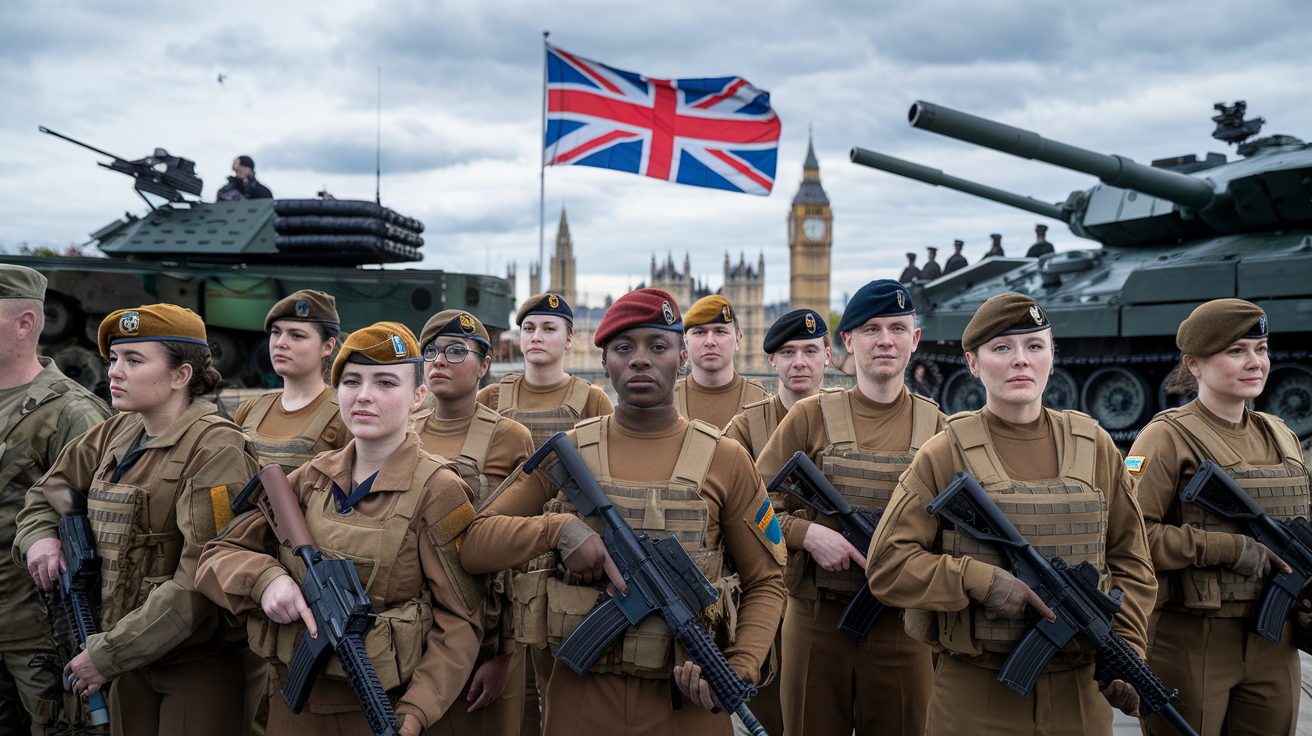
A. Highly trained professional force
The United Kingdom Armed Forces are renowned for their exceptional level of training and professionalism, setting a high standard for military forces worldwide. This reputation is built on a foundation of rigorous selection processes, comprehensive training programs, and a commitment to continuous improvement.
The British military’s training philosophy emphasizes adaptability, critical thinking, and leadership skills, preparing personnel for a wide range of scenarios and challenges. This approach has proven effective in both conventional and asymmetric warfare situations, making the UK Armed Forces a versatile and formidable fighting force.
Key aspects of the UK’s military training include:
- Basic Training: All recruits undergo intensive initial training that focuses on physical fitness, discipline, and core military skills.
- Specialist Training: Personnel receive advanced training in their specific roles, whether it’s infantry, aviation, naval operations, or technical specialties.
- Leadership Development: The UK military places a strong emphasis on developing leadership skills at all levels, from junior non-commissioned officers to senior commanders.
- Joint Operations Training: Regular exercises are conducted to ensure seamless cooperation between different branches of the armed forces.
- International Training: Participation in multinational exercises and exchange programs enhances interoperability with allies.
The effectiveness of this training is evident in the performance of UK forces in various operations around the world. From peacekeeping missions to counter-terrorism operations, British troops have consistently demonstrated their professionalism and expertise.
| Training Aspect | Description | Benefits |
|---|---|---|
| Basic Training | Intensive physical and mental preparation | Builds discipline, fitness, and core military skills |
| Specialist Training | Advanced role-specific instruction | Develops expertise in specific military functions |
| Leadership Development | Comprehensive leadership courses | Creates effective leaders at all levels |
| Joint Operations Training | Cross-branch exercises | Enhances coordination between different military branches |
| International Training | Multinational exercises and exchanges | Improves interoperability with allied forces |
This commitment to training and professionalism has resulted in a force that is not only highly capable but also adaptable to the evolving nature of modern warfare. The UK Armed Forces’ ability to operate effectively in diverse environments and missions is a testament to the quality of their training programs.
B. Advanced naval capabilities
The United Kingdom’s naval capabilities are a cornerstone of its military strength, reflecting its historical maritime dominance and continued investment in cutting-edge naval technology. The Royal Navy, one of the most technologically advanced navies in the world, plays a crucial role in projecting UK’s power globally and safeguarding its interests.
Key elements of the UK’s advanced naval capabilities include:
-
Aircraft Carriers: The introduction of the Queen Elizabeth-class carriers has significantly enhanced the UK’s ability to project power across the globe. These state-of-the-art vessels can support a wide range of military operations and humanitarian missions.
-
Nuclear Submarines: The UK maintains a fleet of nuclear-powered submarines, including ballistic missile submarines (SSBNs) that form the backbone of its nuclear deterrent, and attack submarines (SSNs) for various naval operations.
-
Advanced Surface Combatants: The Royal Navy operates modern frigates and destroyers equipped with advanced radar systems, anti-ship missiles, and air defense capabilities.
-
Amphibious Assault Ships: These vessels enhance the UK’s ability to conduct expeditionary operations and provide humanitarian assistance in crisis situations.
-
Maritime Patrol Aircraft: The introduction of the P-8 Poseidon aircraft has bolstered the UK’s anti-submarine warfare and maritime surveillance capabilities.
The Royal Navy’s technological edge is exemplified by its use of advanced systems such as:
- The Artisan 3D radar system for air and surface detection
- The Sea Ceptor air defense missile system
- The Crowsnest airborne early warning system for carrier groups
- Advanced sonar systems for submarine detection
These capabilities allow the UK to maintain a significant presence in key maritime regions and contribute to international security efforts. The Royal Navy regularly participates in multinational exercises and operations, demonstrating its interoperability with allied navies and its ability to respond to diverse maritime challenges.
| Naval Asset | Capabilities | Strategic Importance |
|---|---|---|
| Aircraft Carriers | Power projection, versatile platform for air operations | Enhances global reach and influence |
| Nuclear Submarines | Strategic deterrence, covert operations, anti-submarine warfare | Provides credible nuclear deterrent and underwater dominance |
| Surface Combatants | Air defense, anti-ship warfare, land attack | Ensures sea control and supports expeditionary operations |
| Amphibious Ships | Troop transport, humanitarian assistance | Enables rapid response to crises and conflicts |
| Maritime Patrol Aircraft | Long-range surveillance, anti-submarine warfare | Improves maritime domain awareness and security |
The UK’s advanced naval capabilities not only contribute to its own defense but also play a crucial role in maintaining global maritime security. From counter-piracy operations to disaster relief efforts, the Royal Navy’s versatility and technological sophistication make it a key player in international naval operations.
C. Strong international alliances
The United Kingdom’s military strength is significantly enhanced by its extensive network of international alliances and partnerships. These relationships not only amplify the UK’s global influence but also provide strategic advantages in terms of collective defense, intelligence sharing, and operational cooperation.
Key alliances and partnerships include:
-
NATO Membership: As a founding member of the North Atlantic Treaty Organization, the UK plays a pivotal role in the collective defense of Europe and North America. This alliance provides a framework for military cooperation, joint exercises, and mutual defense commitments.
-
Five Eyes Intelligence Alliance: The UK’s participation in this exclusive intelligence-sharing agreement with the United States, Canada, Australia, and New Zealand significantly enhances its global intelligence capabilities.
-
Bilateral Defense Agreements: The UK maintains strong bilateral defense relationships with numerous countries, including:
- The United States (Special Relationship)
- France (Lancaster House Treaties)
- Germany (Joint Vision Statement)
- Japan (Defense Cooperation Agreement)
-
Commonwealth Connections: Historical ties with Commonwealth nations provide a platform for military cooperation and training exchanges.
-
European Defense Cooperation: Despite Brexit, the UK continues to engage in defense initiatives with European partners, particularly in areas of mutual interest such as counter-terrorism and cybersecurity.
These alliances offer several strategic advantages:
- Interoperability: Regular joint exercises and standardized procedures enhance the ability of UK forces to operate seamlessly with allies.
- Resource Sharing: Alliances allow for the sharing of military assets, bases, and intelligence, expanding the UK’s global reach.
- Diplomatic Leverage: Strong military partnerships enhance the UK’s diplomatic influence in international affairs.
- Technological Cooperation: Collaborative defense projects with allies keep the UK at the forefront of military technology.
The impact of these alliances on the UK’s military capabilities is significant:
| Alliance Benefit | Description | Impact on UK Military Strength |
|---|---|---|
| Collective Defense | Mutual defense commitments through NATO | Enhances deterrence and security |
| Intelligence Sharing | Access to global intelligence network | Improves strategic decision-making |
| Joint Operations | Ability to conduct multinational military operations | Increases operational effectiveness |
| Technology Transfer | Access to allied military technologies | Keeps UK forces technologically advanced |
| Training Opportunities | Participation in international military exercises | Enhances skills and interoperability |
The UK’s commitment to these alliances is reflected in its active participation in international military operations, from NATO missions in Eastern Europe to counter-terrorism efforts in the Middle East. This engagement not only strengthens the alliances themselves but also provides valuable operational experience for UK forces.
Moreover, the UK’s role in these alliances often extends beyond military cooperation. It includes diplomatic efforts, joint research and development projects, and shared strategic planning. This comprehensive approach to international partnerships ensures that the UK remains a key player in global security affairs.
As we move forward, the importance of these alliances in maintaining global stability and responding to emerging threats cannot be overstated. The UK’s strong international partnerships will continue to be a crucial factor in its military strength and global influence, complementing its highly trained forces and advanced naval capabilities.
French Armed Forces
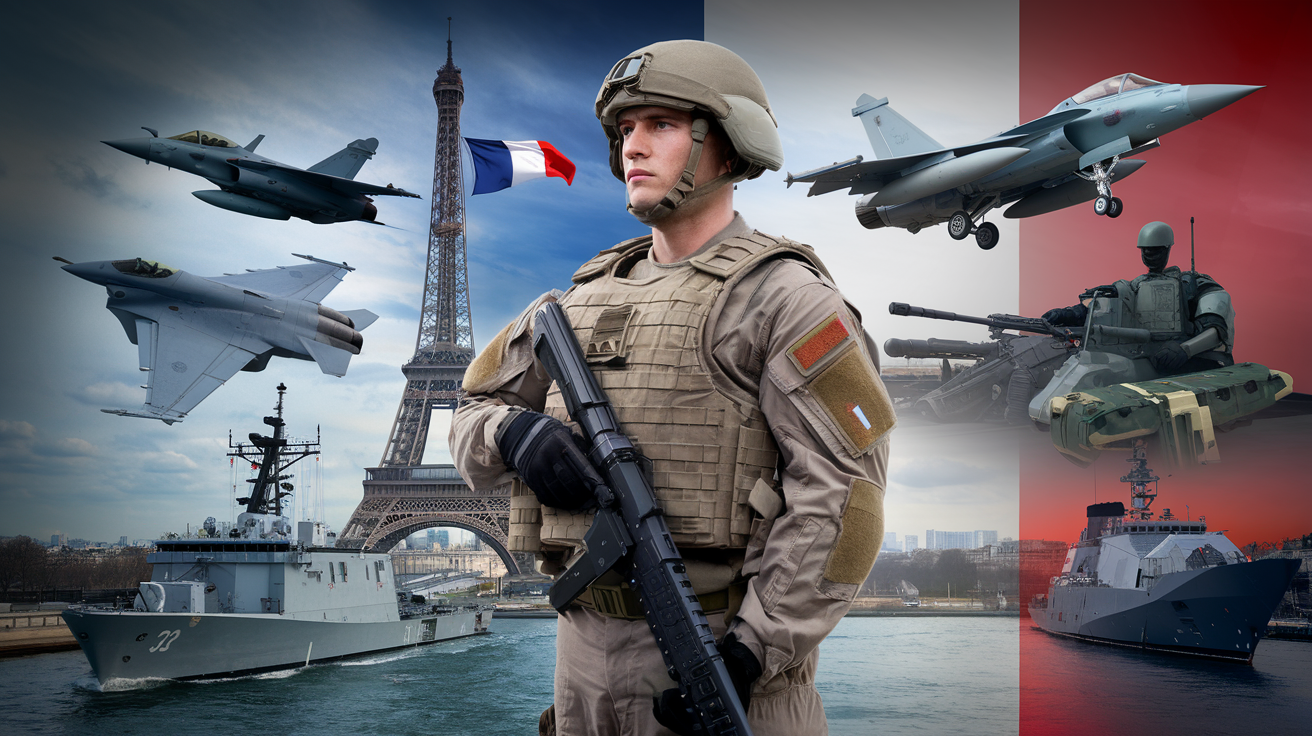
Nuclear deterrent capability
France’s nuclear deterrent capability, known as the Force de Frappe (Strike Force), is a cornerstone of its military power and global influence. As one of the world’s nuclear powers, France maintains a robust and technologically advanced nuclear arsenal that serves as a critical component of its national defense strategy.
The French nuclear deterrent consists of two main components:
- Submarine-launched ballistic missiles (SLBMs)
- Air-launched cruise missiles
Submarine-launched ballistic missiles (SLBMs)
The French Navy operates a fleet of four Triomphant-class nuclear-powered ballistic missile submarines (SSBNs). These submarines form the backbone of France’s nuclear deterrent, providing a continuous at-sea presence and ensuring a second-strike capability. Each submarine can carry up to 16 M51 intercontinental ballistic missiles, capable of delivering multiple independently targetable reentry vehicles (MIRVs) with nuclear warheads.
| Submarine Class | Number of Vessels | Missile Capacity | Missile Type |
|---|---|---|---|
| Triomphant-class | 4 | 16 | M51 SLBM |
The M51 missile, with a range of over 10,000 kilometers, represents the latest advancement in French ballistic missile technology. Its accuracy, range, and payload capacity significantly enhance France’s strategic deterrent capabilities.
Air-launched cruise missiles
The French Air and Space Force maintains a fleet of Rafale and Mirage 2000N fighter aircraft capable of delivering nuclear warheads. These aircraft are equipped with the Air-Sol Moyenne Portée-Amélioré (ASMPA) medium-range air-to-surface missile, which carries a nuclear warhead.
The combination of submarine-based and air-launched nuclear capabilities provides France with a flexible and credible deterrent, ensuring its ability to respond to a wide range of potential threats.
Overseas military bases
France maintains a significant global military presence through its network of overseas military bases. These bases play a crucial role in projecting French power, protecting national interests, and supporting international security operations.
Key French overseas military bases include:
- Djibouti: France’s largest overseas military base, hosting approximately 1,450 personnel
- United Arab Emirates: Air base in Abu Dhabi, supporting operations in the Middle East
- Gabon: Home to the 6th Marine Infantry Battalion
- Côte d’Ivoire: French forces stationed in Abidjan
- Senegal: Naval base in Dakar
- French Polynesia: Naval base in Papeete
These bases serve multiple purposes:
- Power projection: Allowing France to rapidly deploy forces to regions of strategic importance
- Intelligence gathering: Providing valuable information on regional developments
- Maritime security: Supporting anti-piracy operations and safeguarding important shipping lanes
- Counter-terrorism: Enabling France to conduct operations against terrorist groups in Africa and the Middle East
- Humanitarian assistance: Serving as staging points for disaster relief efforts
The presence of these bases demonstrates France’s commitment to maintaining its status as a global military power and its ability to respond to crises worldwide.
Advanced aerospace industry
France’s advanced aerospace industry is a key driver of its military capabilities and technological innovation. The country boasts a robust ecosystem of aerospace companies, research institutions, and government agencies that collaborate to develop cutting-edge military and civilian aircraft, missiles, and space technologies.
Military aircraft
France’s aerospace industry has produced some of the world’s most advanced military aircraft, including:
- Dassault Rafale: A multi-role fighter aircraft capable of performing air superiority, interdiction, reconnaissance, and nuclear strike missions
- Airbus A400M Atlas: A tactical airlifter designed to meet the requirements of modern armed forces
- Eurocopter Tiger: An attack helicopter developed in cooperation with Germany
These aircraft showcase France’s ability to design and manufacture state-of-the-art military platforms that compete with those produced by other major powers.
Missile systems
French companies like MBDA and Thales are at the forefront of missile technology, developing advanced systems such as:
- Exocet anti-ship missile
- MICA air-to-air missile
- Meteor beyond-visual-range air-to-air missile
- SCALP EG / Storm Shadow cruise missile
These missile systems enhance the capabilities of French armed forces and are also exported to numerous countries worldwide, contributing to France’s defense industry revenues and global influence.
Space capabilities
France’s aerospace industry extends into space, with the country being a leading player in European space programs. Key space-related capabilities include:
- Ariane launch vehicles: Developed by ArianeGroup, these rockets provide Europe with independent access to space
- Earth observation satellites: Including the Pleiades constellation for high-resolution imaging
- Military communication satellites: Such as the Syracuse system, ensuring secure global communications for French armed forces
| Space Capability | Description | Strategic Importance |
|---|---|---|
| Ariane launch vehicles | Heavy-lift rockets for satellite deployment | Independent access to space |
| Earth observation satellites | High-resolution imaging for intelligence gathering | Enhanced situational awareness |
| Military communication satellites | Secure global communications network | Command and control capabilities |
The advanced aerospace industry not only strengthens France’s military capabilities but also contributes significantly to its economy and technological leadership on the global stage.
In conclusion, the French Armed Forces’ nuclear deterrent capability, extensive network of overseas military bases, and advanced aerospace industry collectively contribute to France’s position as one of the world’s most powerful military forces. These capabilities enable France to project power globally, respond to diverse threats, and maintain its status as a key player in international security affairs. As we move forward, we’ll explore the unique strengths and capabilities of the Japanese Self-Defense Forces, another formidable military power in our ranking.
Japanese Self-Defense Forces
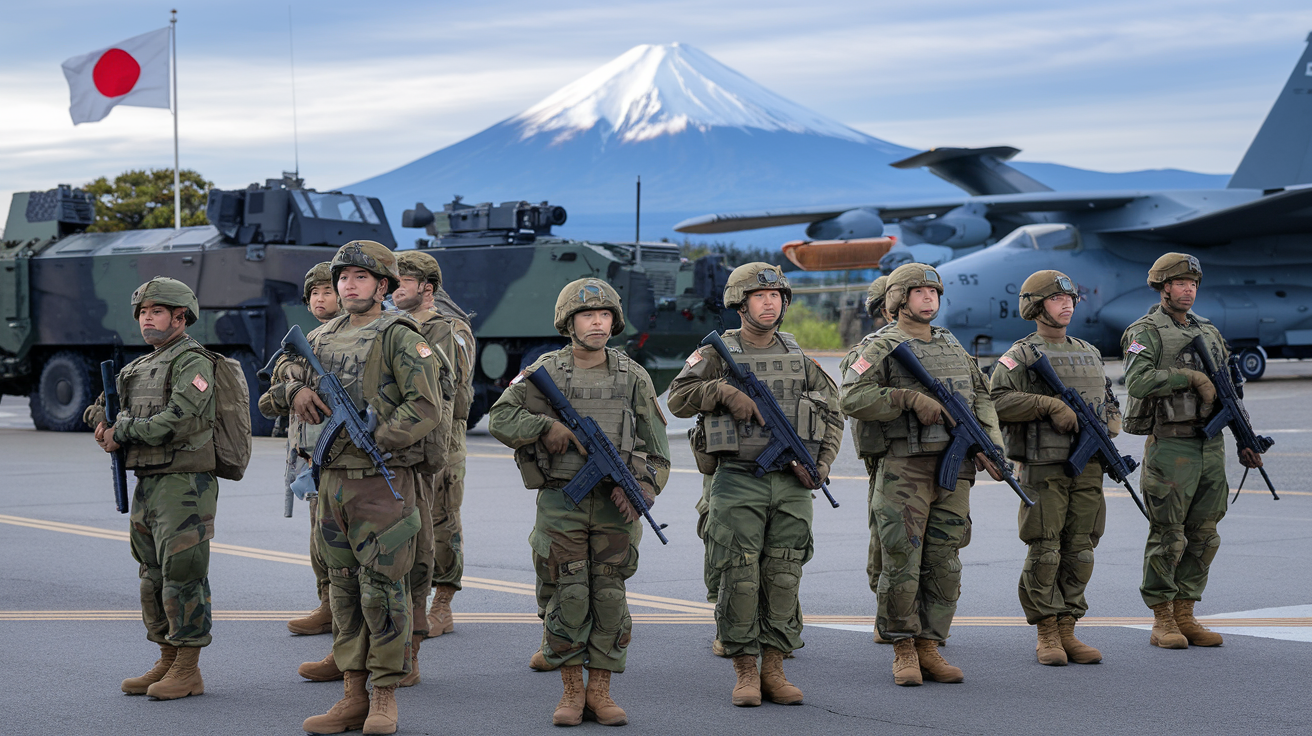
Cutting-edge technology integration
The Japanese Self-Defense Forces (JSDF) have consistently demonstrated their commitment to incorporating cutting-edge technology into their military capabilities. This focus on innovation has allowed Japan to maintain a formidable defense force despite constitutional limitations on offensive capabilities.
One of the most notable areas of technological advancement in the JSDF is their use of artificial intelligence (AI) and robotics. Japan has been developing AI-powered systems for various military applications, including:
- Autonomous surveillance drones
- Predictive maintenance for military equipment
- Cyber defense systems
- Decision support systems for commanders
These AI-driven technologies enhance the JSDF’s operational efficiency and effectiveness, allowing them to do more with fewer personnel and resources.
In addition to AI, the JSDF has made significant strides in the field of unmanned systems. They have developed and deployed a range of unmanned aerial vehicles (UAVs), unmanned ground vehicles (UGVs), and unmanned underwater vehicles (UUVs) for reconnaissance, surveillance, and even combat support roles. These unmanned systems provide the JSDF with enhanced situational awareness and reduce the risk to human personnel in dangerous situations.
| Unmanned System Type | Examples | Primary Functions |
|---|---|---|
| UAVs | RQ-4 Global Hawk, indigenous designs | Long-range surveillance, reconnaissance |
| UGVs | ACTV (Autonomous Combat Technology Vehicle) | Combat support, logistics |
| UUVs | OZZ-5 | Underwater mine detection, submarine hunting |
The JSDF has also invested heavily in advanced communications and networking technologies. Their integrated command, control, communications, computers, intelligence, surveillance, and reconnaissance (C4ISR) systems are among the most sophisticated in the world. These systems enable seamless coordination between different branches of the JSDF and enhance their ability to respond quickly to potential threats.
Strong focus on defensive capabilities
As dictated by Article 9 of the Japanese Constitution, the JSDF’s primary focus is on defensive capabilities. This unique constraint has led to the development of highly specialized and advanced defensive systems that set the JSDF apart from other military forces around the world.
One of the key defensive capabilities of the JSDF is their sophisticated missile defense system. Japan has invested heavily in developing and deploying a multi-layered missile defense network that includes:
- Aegis-equipped destroyers with SM-3 interceptor missiles
- Patriot Advanced Capability-3 (PAC-3) surface-to-air missile systems
- Land-based Aegis Ashore systems (planned)
This comprehensive missile defense system provides Japan with a robust shield against potential ballistic missile threats from neighboring countries.
The JSDF has also focused on developing advanced early warning and detection systems. These include:
- Over-the-horizon radars
- Airborne early warning and control (AEW&C) aircraft
- Space-based surveillance satellites
These systems allow the JSDF to detect and track potential threats at great distances, providing valuable time for defensive preparations and responses.
In terms of ground-based defensive capabilities, the JSDF has developed highly mobile and versatile units capable of rapid deployment to any part of the Japanese archipelago. These units are equipped with state-of-the-art defensive weapons and equipment, including:
- Type 10 main battle tanks with advanced armor and fire control systems
- Type 19 wheeled armored fighting vehicles for rapid response
- Advanced anti-tank and anti-aircraft missile systems
The JSDF’s defensive focus extends to the cyber domain as well. Japan has established a dedicated Cyber Defense Unit within the Self-Defense Forces to protect critical military and civilian infrastructure from cyber attacks. This unit works closely with other government agencies and international partners to enhance Japan’s cyber defense capabilities.
Maritime and air superiority
Despite their defensive posture, the JSDF has developed significant capabilities in maritime and air superiority, which are crucial for protecting Japan’s extensive coastline and territorial waters.
In the maritime domain, the Japan Maritime Self-Defense Force (JMSDF) operates one of the most advanced and capable naval fleets in the world. Key assets include:
- Helicopter carriers (which can be converted to light aircraft carriers)
- Aegis-equipped destroyers
- Advanced submarines
- Mine countermeasure vessels
The JMSDF’s fleet is particularly well-suited for anti-submarine warfare, a critical capability given the increasing submarine activity in the region. Their advanced sonar systems and anti-submarine helicopters give them a significant advantage in detecting and tracking underwater threats.
| Vessel Type | Examples | Key Capabilities |
|---|---|---|
| Helicopter Carriers | Izumo-class | Can operate F-35B fighters (after modifications) |
| Destroyers | Atago-class, Maya-class | Aegis combat system, ballistic missile defense |
| Submarines | Sōryū-class | Air-independent propulsion, advanced sonar |
In the air domain, the Japan Air Self-Defense Force (JASDF) maintains a fleet of advanced fighter aircraft and support platforms. Notable assets include:
- F-35A and F-35B stealth fighters
- F-15J air superiority fighters
- E-2D Advanced Hawkeye airborne early warning aircraft
- KC-46A tanker aircraft for aerial refueling
The JASDF’s focus on air superiority is evident in its acquisition of the latest generation of stealth fighters and its ongoing modernization of existing platforms. These aircraft, combined with advanced air-to-air missiles and sophisticated electronic warfare systems, give the JASDF a significant edge in potential air combat scenarios.
The integration of maritime and air capabilities is a key strength of the JSDF. Joint exercises and operations between the JMSDF and JASDF have honed their ability to work together seamlessly, creating a formidable combined force for defending Japan’s airspace and maritime interests.
As we move forward in our analysis of the world’s most powerful armies, it’s important to recognize that while the Japanese Self-Defense Forces may have unique constraints, their technological prowess, defensive focus, and maritime and air capabilities make them a formidable military force in the Asia-Pacific region. Next, we’ll examine another significant player in the global military landscape: the South Korean Armed Forces.
South Korean Armed Forces
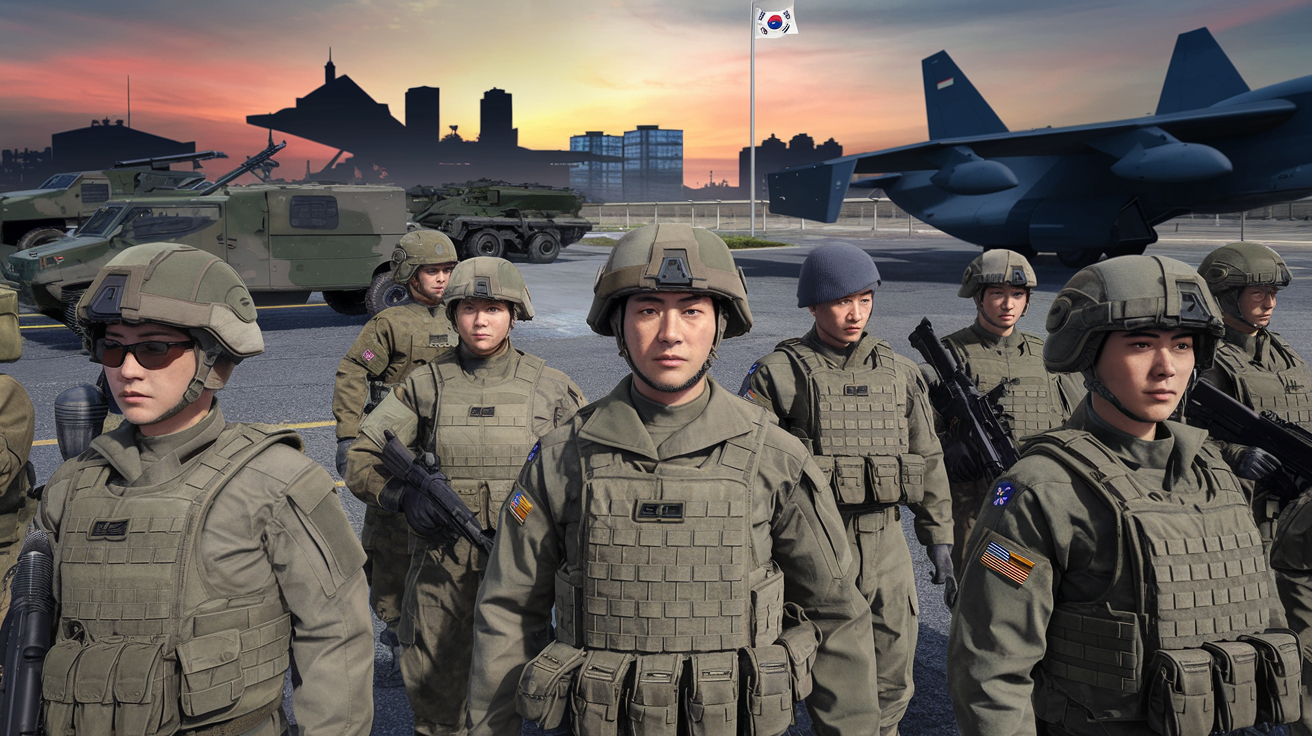
Mandatory military service
South Korea’s military strength is deeply rooted in its system of mandatory military service, a practice that has been in place since 1957. This policy requires all able-bodied male citizens between the ages of 18 and 28 to serve in the military for a specified period. This system has played a crucial role in maintaining a large and well-trained force, contributing significantly to South Korea’s position as one of the world’s most powerful armies.
The length of service varies depending on the branch:
- Army and Marine Corps: 18 months
- Navy: 20 months
- Air Force: 22 months
This mandatory service not only ensures a constant influx of personnel but also creates a large reserve force of trained individuals who can be called upon in times of need. As of 2023, South Korea maintains an active military force of approximately 555,000 personnel, with an additional 3.1 million in reserve.
The benefits of mandatory military service for South Korea’s armed forces include:
- Continuous replenishment of personnel
- Cost-effective training of a large population
- Enhanced national security awareness among citizens
- Development of discipline and leadership skills in young adults
- Promotion of national unity and shared experience
However, the system is not without its challenges:
- Potential disruption to education and career paths
- Psychological impact on young adults
- Debates about gender equality, as women are exempt from mandatory service
- Economic implications of removing young adults from the workforce
Despite these challenges, the mandatory military service system remains a cornerstone of South Korea’s defense strategy, contributing significantly to its ranking among the world’s most powerful armies.
Advanced indigenous weapon systems
South Korea’s position as a formidable military power is further solidified by its impressive array of advanced indigenous weapon systems. The country has made significant strides in developing and manufacturing its own military equipment, reducing dependence on foreign suppliers and tailoring solutions to its specific defense needs.
Some of South Korea’s notable indigenous weapon systems include:
| System | Type | Description |
|---|---|---|
| K2 Black Panther | Main Battle Tank | Advanced tank with autoloader and advanced fire control system |
| K9 Thunder | Self-propelled Howitzer | Long-range artillery with high mobility and rate of fire |
| KF-21 Boramae | Fighter Aircraft | 4.5 generation multirole fighter currently in development |
| Sejong the Great-class | Destroyer | Advanced guided missile destroyer with AEGIS combat system |
| Hyunmoo | Ballistic Missile | Family of short to intermediate-range ballistic missiles |
These indigenous systems showcase South Korea’s technological prowess and commitment to self-reliance in defense. The development of these advanced weapons not only enhances the country’s military capabilities but also boosts its defense industry, contributing to economic growth and technological innovation.
South Korea’s focus on indigenous weapon systems offers several advantages:
- Customization to specific operational requirements
- Reduced dependence on foreign suppliers
- Boost to domestic defense industry and economy
- Enhanced export potential for defense products
- Improved national security through technological self-reliance
The country’s defense industry has also become a significant exporter, with South Korean weapons and military equipment being sold to various countries worldwide. This not only generates revenue but also strengthens diplomatic ties and enhances South Korea’s global influence.
Strong alliance with the United States
A critical factor in South Korea’s military strength is its robust alliance with the United States. This partnership, formalized through the Mutual Defense Treaty signed in 1953, has been a cornerstone of South Korea’s defense strategy for decades. The alliance provides South Korea with significant strategic advantages, enhancing its military capabilities and deterrence against potential threats.
Key aspects of the South Korea-U.S. military alliance include:
- Combined Forces Command (CFC): A joint military structure that integrates the command of both countries’ forces in times of war.
- Regular joint military exercises: Large-scale drills like Foal Eagle and Key Resolve enhance interoperability and readiness.
- U.S. military presence: Approximately 28,500 U.S. troops are stationed in South Korea.
- Intelligence sharing: Cooperation in gathering and analyzing military intelligence.
- Technology transfer: Access to advanced U.S. military technology and equipment.
The alliance provides numerous benefits to South Korea’s armed forces:
- Enhanced deterrence against North Korean aggression
- Access to advanced military technology and training
- Improved interoperability with U.S. forces
- Shared intelligence and strategic planning
- Economic benefits through defense contracts and cooperation
However, the alliance also faces challenges:
- Balancing act with China: South Korea must navigate its relationship with China, a major economic partner, while maintaining its alliance with the U.S.
- Cost-sharing debates: Periodic negotiations over the financial contribution for maintaining U.S. troops in South Korea.
- Sovereignty concerns: Some South Koreans worry about the influence of U.S. military presence on national sovereignty.
- Operational Control (OPCON) transfer: Ongoing discussions about transferring wartime operational control of South Korean forces from the U.S. to South Korea.
Despite these challenges, the South Korea-U.S. alliance remains strong and continues to evolve to meet new security challenges in the region. This partnership, combined with South Korea’s indigenous military capabilities and mandatory service system, forms the foundation of its position as one of the world’s most powerful armies.
As we’ve seen, South Korea’s military strength is built on a combination of mandatory service, advanced indigenous weapons, and a strong alliance with the United States. These factors work together to create a formidable force capable of defending against threats and projecting power in the region. Next, we’ll examine another powerful military force that has made significant strides in recent years – the Israeli Defense Forces.
Israeli Defense Forces
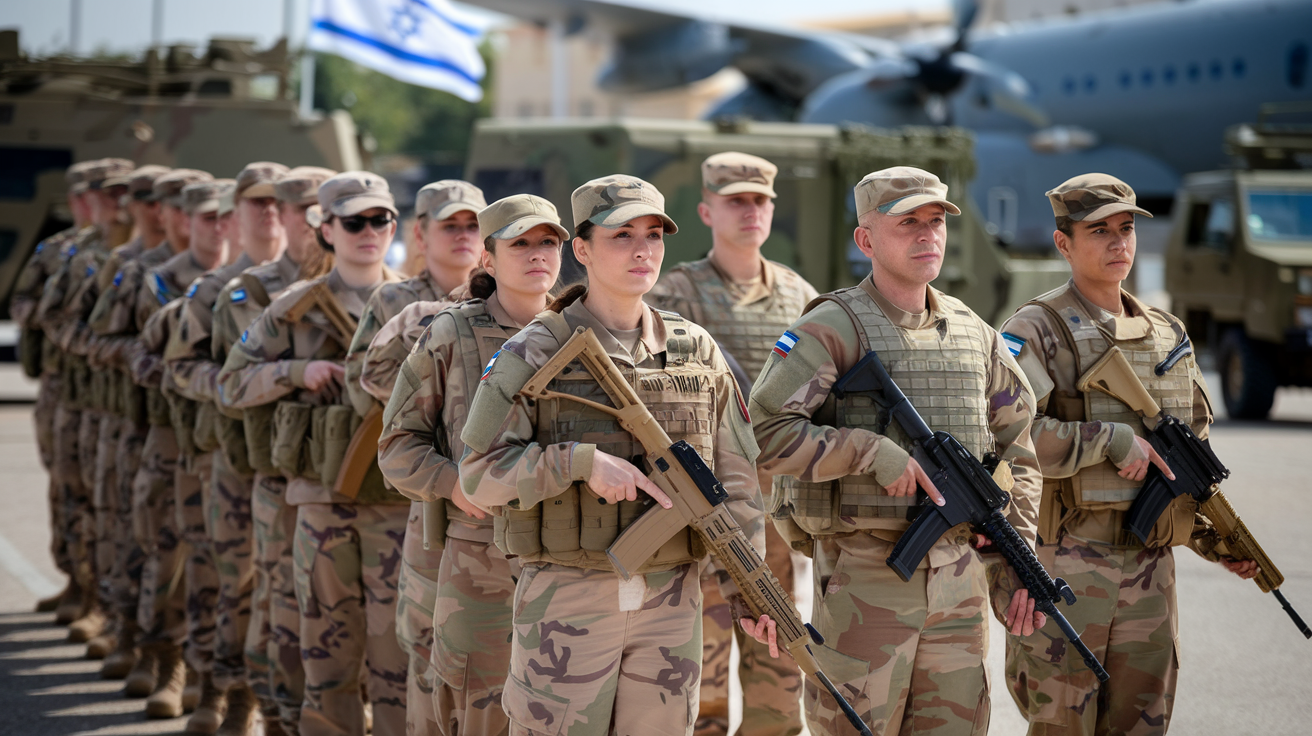
Compulsory conscription
The Israeli Defense Forces (IDF) stand out among global militaries due to their unique approach to recruitment through compulsory conscription. This system ensures a constant influx of fresh talent and maintains a large reserve force, contributing significantly to Israel’s military readiness.
Under Israeli law, most citizens are required to serve in the military upon reaching the age of 18. Men typically serve for 32 months, while women serve for 24 months. This mandatory service applies to both Jewish and Druze citizens, with some exceptions for religious, physical, or psychological reasons.
The benefits of compulsory conscription for the IDF include:
- Large standing army
- Diverse skill set among recruits
- Strong national unity and shared experience
- Continuous training and preparedness
Here’s a breakdown of the conscription process:
| Stage | Description |
|---|---|
| Pre-conscription | Medical and psychological evaluations |
| Enlistment | Assignment to a specific unit based on skills and needs |
| Basic Training | Physical fitness and military fundamentals |
| Advanced Training | Specialized skills for assigned roles |
| Active Service | Deployment and ongoing training |
| Reserve Duty | Annual training and potential call-up until age 40-45 |
This system ensures that the IDF maintains a high level of readiness and can quickly mobilize a large force when needed, contributing to Israel’s reputation as one of the world’s most powerful armies.
Advanced intelligence capabilities
The IDF’s intelligence capabilities are widely regarded as among the best in the world. This reputation is built on a combination of cutting-edge technology, human intelligence, and a deep understanding of regional dynamics.
Key components of Israel’s intelligence apparatus include:
- Unit 8200: This elite intelligence unit is renowned for its signals intelligence (SIGINT) and cyber capabilities.
- Mossad: Israel’s external intelligence agency, known for its covert operations and intelligence gathering abroad.
- Shin Bet: The internal security service, focusing on counterterrorism and domestic intelligence.
- Aman: The military intelligence directorate, responsible for producing comprehensive intelligence assessments.
These agencies work in close coordination, sharing information and resources to provide the IDF with a comprehensive intelligence picture. This integration allows for rapid decision-making and precise military actions.
The IDF’s advanced intelligence capabilities are evident in several areas:
- Cybersecurity and cyber warfare
- Satellite and aerial reconnaissance
- Electronic warfare and signal interception
- Human intelligence networks
- Data analysis and artificial intelligence applications
These capabilities have proven crucial in various operations, from preventing terrorist attacks to conducting precision strikes against specific targets. The IDF’s intelligence prowess has also led to collaborations with other nations, further enhancing its global influence and effectiveness.
Battle-tested forces
One of the most significant factors contributing to the IDF’s reputation as a powerful military force is its extensive combat experience. Since its establishment in 1948, Israel has been involved in numerous conflicts, providing its forces with real-world experience that few other militaries can match.
Key conflicts that have shaped the IDF include:
- 1948 Arab-Israeli War
- Suez Crisis (1956)
- Six-Day War (1967)
- Yom Kippur War (1973)
- Lebanon War (1982)
- First and Second Intifadas
- Lebanon War (2006)
- Gaza conflicts (2008-2009, 2012, 2014, 2021)
This continuous exposure to combat situations has led to several advantages for the IDF:
- Rapid adaptation to changing battlefield conditions
- Development of innovative tactics and strategies
- Improved training methods based on real-world experiences
- Enhanced coordination between different military branches
- Battle-hardened leadership at all levels
The IDF’s battle-tested nature is reflected in its organizational structure, which emphasizes flexibility and rapid response. Units are designed to operate independently when necessary, with clear chains of command that allow for quick decision-making in the heat of battle.
Moreover, the IDF’s experience has led to the development of unique doctrines, such as the “Iron Wall” concept, which emphasizes deterrence through overwhelming military superiority. This approach has shaped Israel’s defense strategy and continues to influence its military operations today.
Innovative military technologies
The Israeli Defense Forces are renowned for their technological innovation, often developing cutting-edge solutions to address specific military challenges. This focus on innovation has not only enhanced the IDF’s capabilities but has also positioned Israel as a global leader in military technology.
Some key areas of technological innovation in the IDF include:
-
Missile Defense Systems
- Iron Dome: Short-range rocket defense
- David’s Sling: Medium-range missile defense
- Arrow: Long-range ballistic missile defense
-
Unmanned Aerial Vehicles (UAVs)
- Heron TP: Long-endurance surveillance drone
- Harpy: Anti-radar loitering munition
- Harop: Kamikaze drone for precision strikes
-
Armored Vehicles
- Merkava: Main battle tank with unique design features
- Namer: Heavy armored personnel carrier
-
Electronic Warfare
- Advanced jamming and counter-jamming systems
- Cyber defense and offense capabilities
-
Smart Munitions
- Precision-guided bombs and missiles
- Loitering munitions for extended target acquisition
The IDF’s culture of innovation is supported by close collaboration between the military, academia, and the private sector. This ecosystem has given rise to numerous startups and defense companies that continue to push the boundaries of military technology.
Here’s a comparison of some key innovative technologies developed by the IDF:
| Technology | Purpose | Key Features |
|---|---|---|
| Iron Dome | Short-range missile defense | 90% interception rate, rapid deployment |
| Merkava Tank | Main battle tank | Front-engine design, exceptional crew protection |
| Spike Missile | Anti-tank guided missile | Fire-and-forget capability, long range |
| Guardium UGV | Unmanned ground vehicle | Autonomous patrol and reconnaissance |
| Sky Rider | Tactical UAV | Man-portable, real-time intelligence gathering |
These innovations have not only enhanced the IDF’s combat effectiveness but have also become valuable export products, further cementing Israel’s position as a major player in the global defense industry.
The IDF’s commitment to technological innovation extends beyond hardware to include advanced software systems, artificial intelligence applications, and cutting-edge training methods. This holistic approach to military modernization ensures that the IDF remains at the forefront of military technology, ready to face evolving threats in an increasingly complex battlefield environment.
As we move forward in our exploration of the world’s most powerful armies, it’s clear that the Israeli Defense Forces have earned their place among the elite through a combination of compulsory service, advanced intelligence, battle-tested experience, and technological innovation. These factors work in synergy to create a formidable military force that punches well above its weight on the global stage.
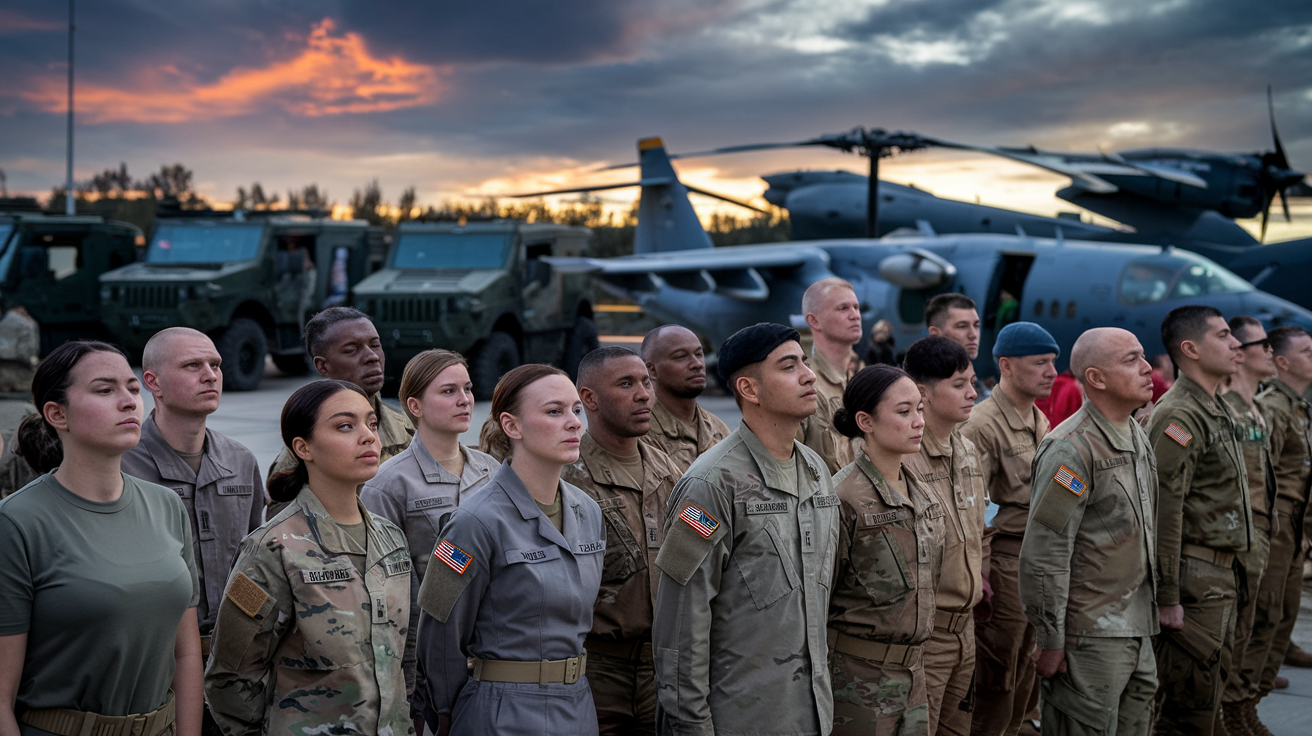
The global military landscape is constantly evolving, with nations continually striving to enhance their defense capabilities. From the United States’ unparalleled technological prowess to Israel’s innovative defense strategies, each of the top ten powerful armies brings unique strengths to the table. These forces not only safeguard their respective nations but also play crucial roles in maintaining global peace and security.
As we look to the future, it’s clear that military power will continue to be shaped by factors such as technological advancements, geopolitical shifts, and economic resources. Nations must adapt to emerging threats and challenges while fostering international cooperation. Ultimately, the true measure of a nation’s strength lies not just in its military might, but in its ability to use that power responsibly and in the pursuit of global stability.

